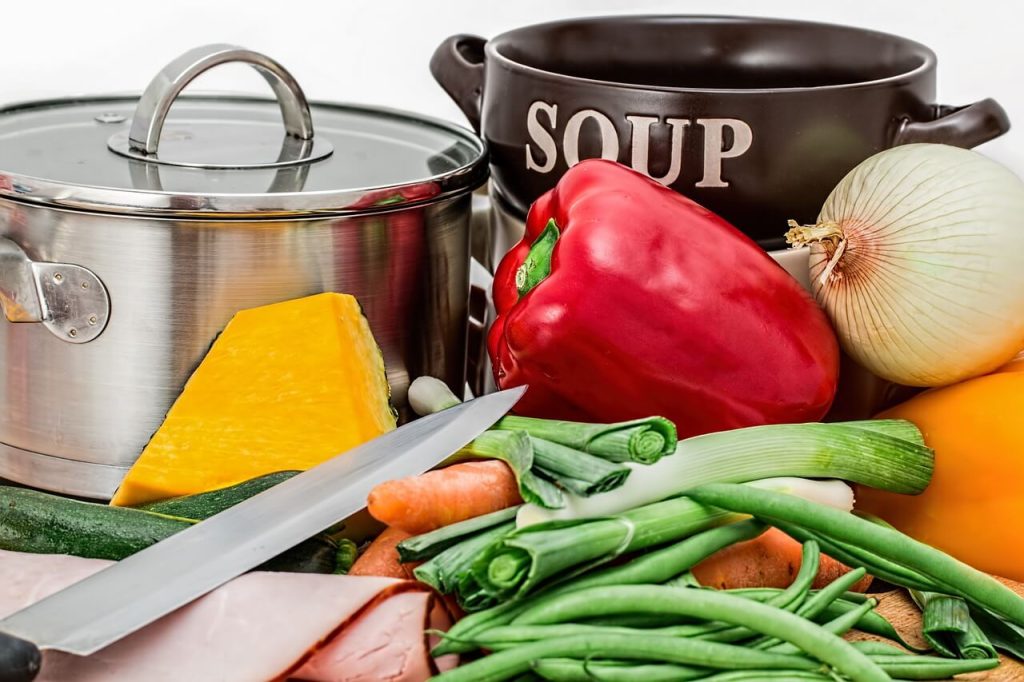The daily hustle can leave you feeling overwhelmed, especially when juggling home chores, work, and personal life. You want to provide delicious, nutritious meals for your family, but time often slips away.
Try rapid cooking methods to transform your meal prep experience. These techniques will simplify your kitchen routine, letting you whip up tasty dishes in a fraction of the time. This change will help you spend more moments with your loved ones.
Pressure Cooking
Pressure cooking transforms your meal prep. You seal food and liquid in a pressure cooker or an instant pot, trapping steam inside. As heat builds, pressure rises, forcing hot steam into your food. This cooks it faster than traditional methods. You’ll save time, often cutting cooking by two-thirds.
Plus, less cooking time means more nutrients stay in your food. You can make tasty stews, tender grains, tender meats, and soft beans quickly. It’s like having a kitchen helper that speeds up your cooking without sacrificing flavor or health benefits. However, it’s important to use pressure cookers safely.
There have been many reports of pressure cooker explosion cases making headlines. In March 2024, a mother suffered third-degree burns to her face and arms after her pressure cooker exploded while she was cooking. Numerous similar tragic mishaps underscore the necessity of adhering to safety guidelines.
These include ensuring the lid is properly sealed, not overfilling the pot, using the correct heat settings, and regularly checking the pressure release valve. While these safety measures are crucial, sometimes accidents happen despite your best efforts. Faulty equipment or unclear instructions can lead to unexpected dangers.
You can sue the manufacturer if a pressure cooker has hurt you. TorHoerman Law states that manufacturers must do quality checks and provide clear instructions for handling these potentially harmful appliances. If they fail to do so, they could be held responsible. If this matches your situation, you should consider legal action for justice and possible financial compensation.
Nonetheless, pressure cooking ensures delicious and healthy meals after a busy day in no time. But, always remain vigilant and prioritize safety to avoid potential hazards.
Microwave Cooking
A microwave is not just for reheating leftovers; it can also help you prepare complete meals in minutes. For veggies, add a splash of water and cover them to steam perfectly. When cooking rice and grains, use a microwave-safe bowl with a lid to prevent spills. Proteins like fish cook quickly too. Just add seasoning and wrap them in parchment paper for a flavorful meal.
To get the most out of your microwave, use microwave-safe containers. Also, spread food evenly for consistent cooking. Remember to stir or rotate dishes halfway through to ensure even heating. Additionally, cover food to retain moisture and avoid overcooking by checking frequently. While these practices enhance your cooking experience, safety is key when using your microwave.
Always check that the door closes properly. If it doesn’t, or if you notice any damage, stop using it immediately. The FDA warns against operating microwaves with the door open. This can expose you to harmful radiation which can lead to serious health issues such as radiation sickness and cancer risks. Check hinges, latches, and seals for signs of wear and damage frequently. Avoid using metal containers or aluminum foil to prevent sparks and fires.
Batch Cooking & Freezing
Batch cooking and freezing refers to preparing large amounts of food ahead of time and storing them for later consumption. Plan your menu around versatile ingredients. These can be grains, beans, and seasonal vegetables that can be used in soups, stir-fries, and casseroles. Dedicate a few hours on the weekend to cook in bulk. Portion and label your meals before freezing so you always have a homemade dinner ready to go.
To keep your frozen meals tasty, cool them quickly before freezing. Use airtight containers or freezer bags to prevent freezer burn. Remove excess air to minimize ice crystal formation, which can compromise the food’s texture. When reheating, thaw meals in the fridge overnight. Slow thawing prevents bacterial growth and maintains food quality.
Avoid leaving perishables at room temperature for over two hours to prevent bacteria growth and foodborne illnesses. With these tips, you’ll breeze through busy weeks with delicious, home-cooked meals at your fingertips, ready to nourish you and your family.
Sous Vide Cooking
Sous vide cooking, which means “under vacuum” in French, started in the 1970s. This technique entails enclosing food in a vacuum-sealed bag and cooking it in a water bath at a specific temperature. This guarantees that your food cooks uniformly while preserving its moisture and flavor. As a result, you will enjoy tender, perfectly cooked dishes every time.
One of the best things about sous vide cooking is that it allows you to set it and forget it. You can prepare meals in advance, seal them, and cook them later. This hands-off method lets you dedicate freed-up time to other things. Cook juicy steaks, tender chicken breasts, or perfectly cooked vegetables. You’ll love the consistent results and the ease of preparation.
For optimal results with this technique, always choose high-quality, fresh ingredients. Add seasoning to your food before placing it in the bag. For meats, consider a quick sear before and after sous vide cooking. Searing meats before kills surface bacteria while searing them after adds flavor and texture.
Adjust the temperature and cooking times to discover your ideal level of doneness. Always follow food safety guidelines such as avoiding the danger zone between 40°F and 140°F where bacteria can grow. This ensures your food is not only delicious but also safe to consume.
Creative Use of Leftovers
Yes, leftovers are safe to eat if you use them within 3 to 4 days of storing them in the fridge. After that, it’s best to freeze them. Don’t risk food poisoning by keeping them too long, leading to illness. Properly managing your leftovers keeps you safe and allows you to be creative in the kitchen. For instance, you can turn yesterday’s roast chicken into a tasty sandwich filling.
Similarly, use extra veggies in a quick stir-fry. If you have leftover fruits, blend them into a refreshing smoothie. Another great idea is to transform pasta into a frittata. This makes for a delicious brunch option. Additionally, you can make a hearty soup using leftover meat and vegetables. This creates a comforting meal that minimizes waste.
These creative uses for leftovers can help you enjoy a variety of flavorful dishes while saving time and resources. However, for safe consumption, follow these key practices. Reheat only what you’ll eat to preserve nutrients. Always heat food thoroughly to eliminate any bacteria. Avoid reheating food more than once to minimize the risk of foodborne illness.
To keep leftovers fresh and avoid contamination, store them in airtight containers. Be sure to label each container with the date to monitor their freshness. Additionally, regularly check for any signs of spoilage. Look for off smells or unusual textures.
Frequently Asked Questions
How can I cook at home with a busy schedule?
To cook at home with a busy schedule, plan meals in advance, batch cook on weekends, use quick recipes, and utilize kitchen gadgets like food processors, blenders, slow cookers, or instant pots. Keep healthy snacks handy to minimize unhealthy eating.
What cooks things fast?
Several cooking methods are known for their speed. Pressure cooking uses steam to cook food quickly, while microwave ovens heat food rapidly through electromagnetic radiation. Using high heat and minimal oil stir-frying and sautéing also expedite cooking.
What is the simplest method of cooking?
The simplest method of cooking is boiling. This technique involves immersing food in water or broth at high temperatures, allowing it to cook evenly and retain nutrients. Boiling is versatile, and suitable for vegetables, grains, and proteins, making it a convenient choice.
Rapid cooking methods are a game-changer for busy homeowners. They save time, cut stress, and make meal prep a breeze. Try out different techniques to find what fits your lifestyle best. Maybe sous vide cooking works for you, or perhaps pressure cooking is your go-to.
Besides the rapid cooking methods we’ve discussed, there are even more options, such as air frying, sautéing, stir-frying, and one-pot meals. These techniques can further enhance your culinary collection, making meal preparation even more efficient. The key is to experiment and have fun with it. Remember, quick cooking doesn’t mean boring meals. You can still create tasty, nutritious dishes that your family will love.




